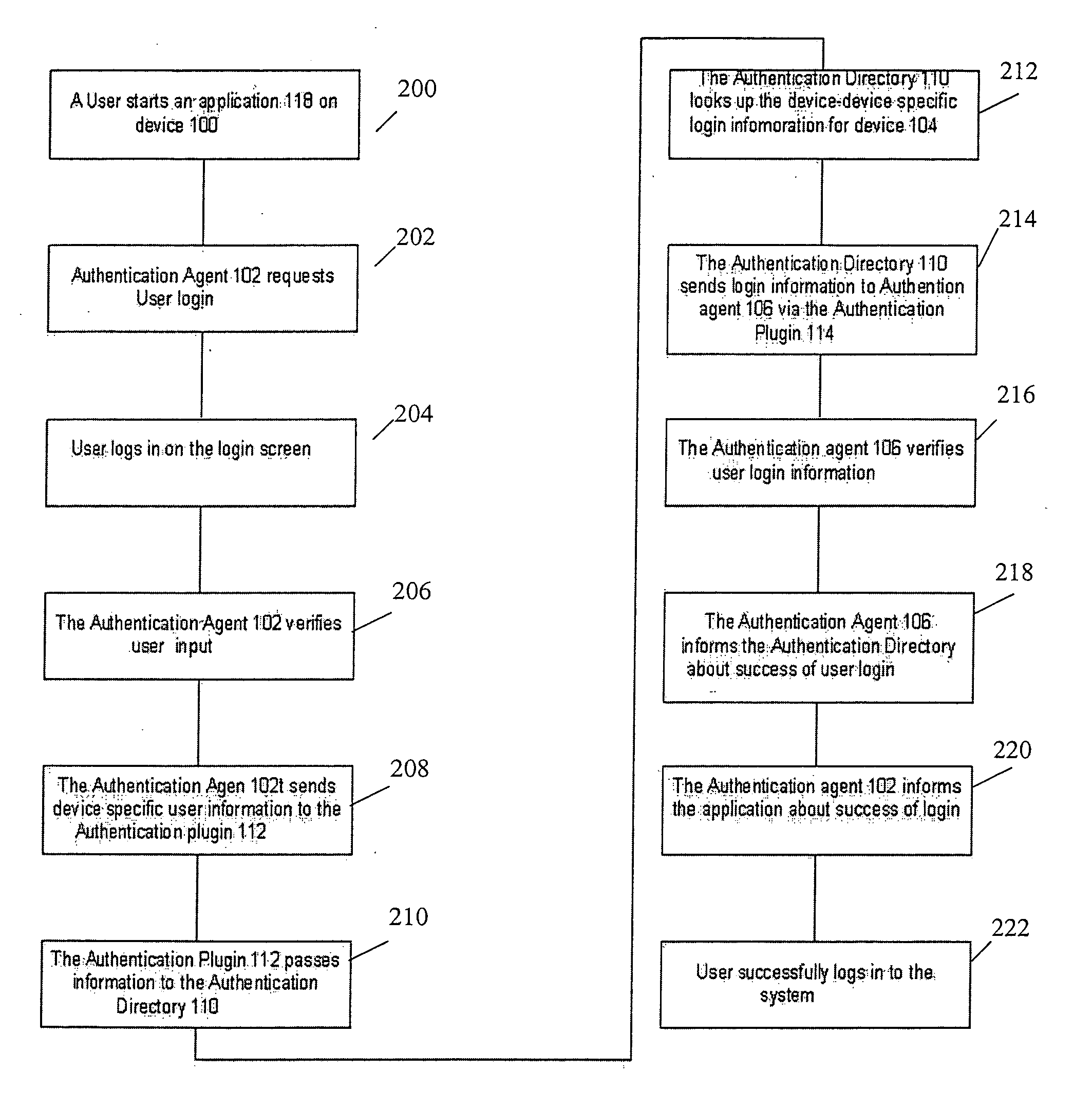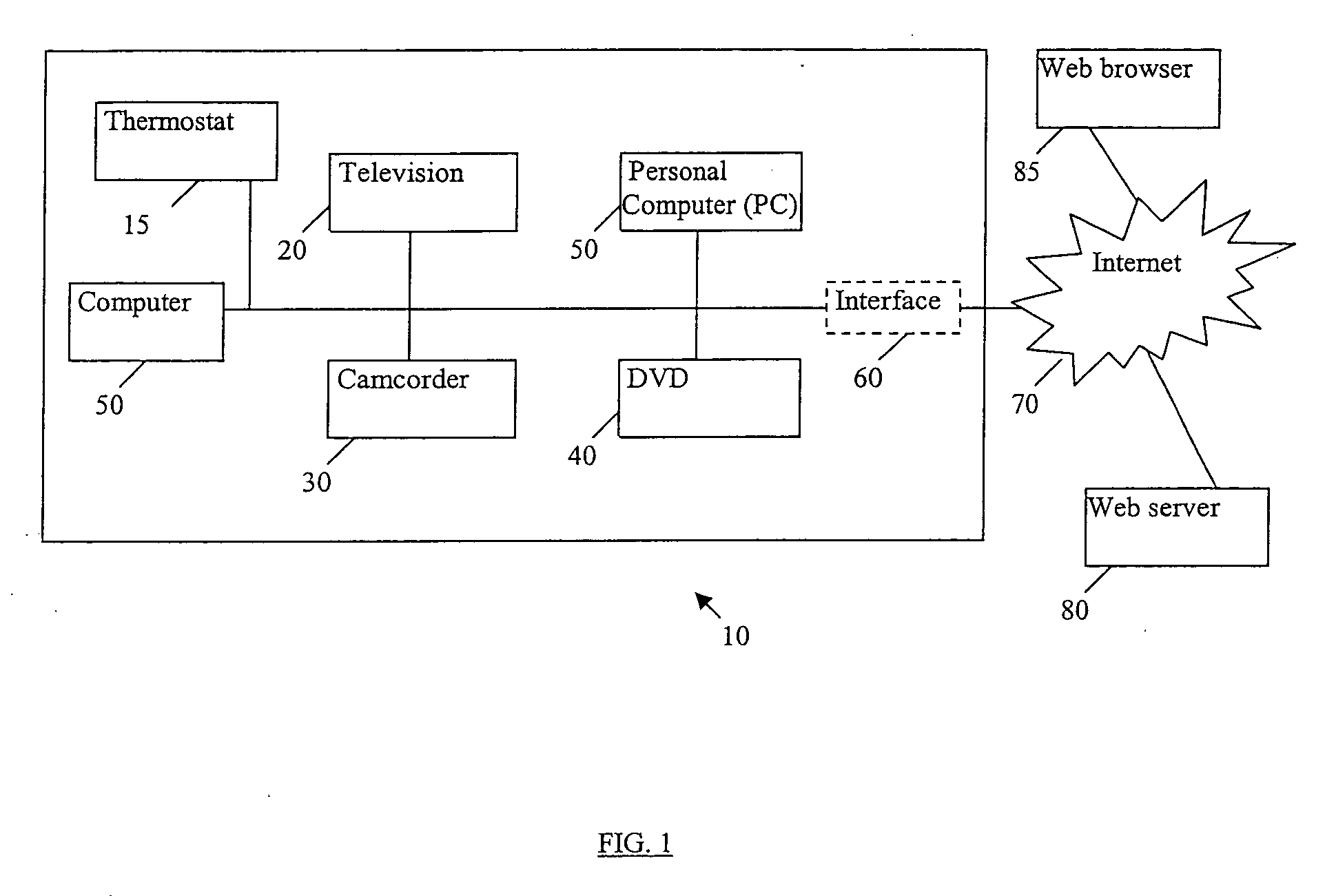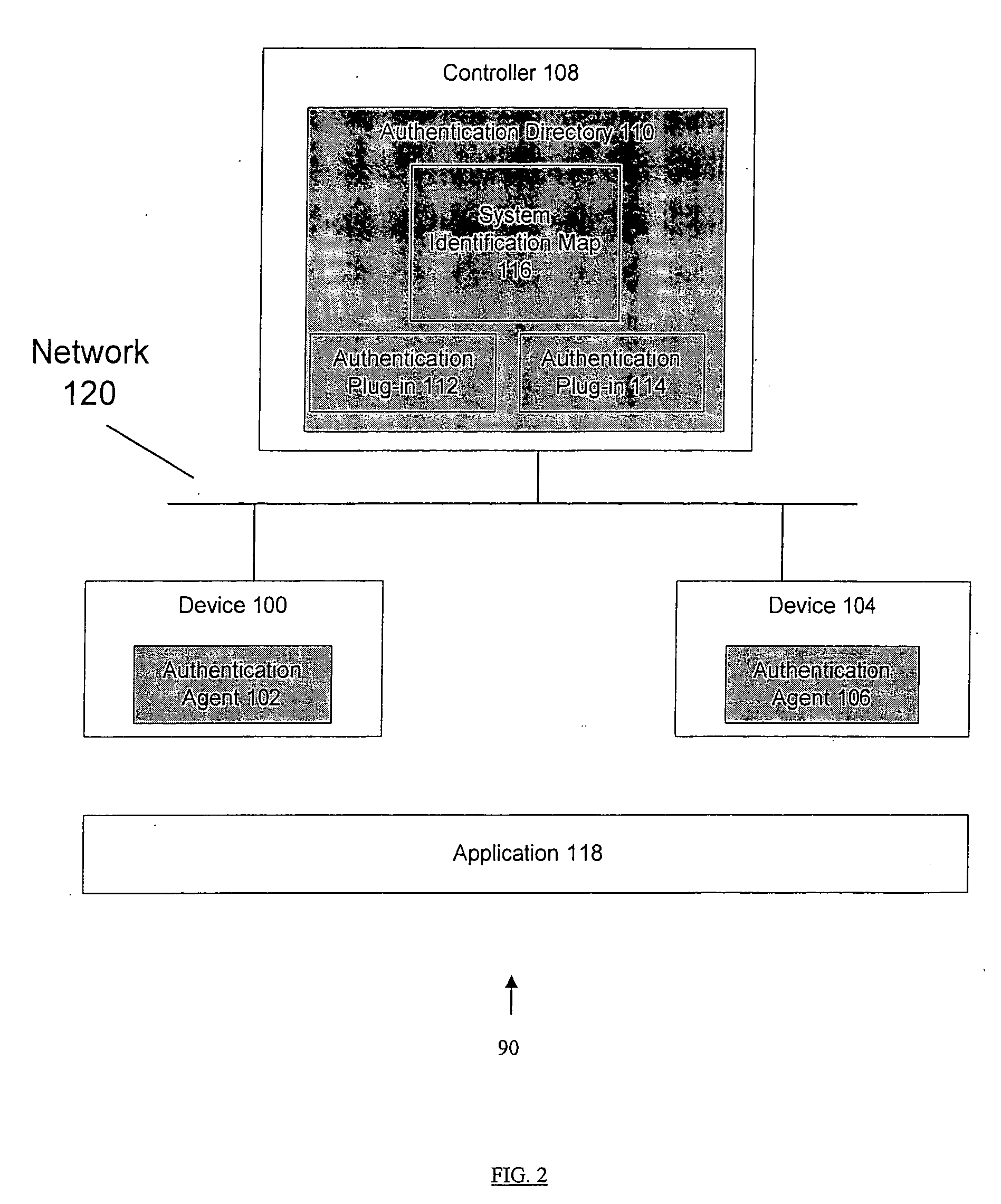Method and system for single sign-on in a network
a single sign-on and network technology, applied in the field of user authentication, can solve the problems of inflexible federated id system, user cannot authenticate himself/herself on any given device, and cannot be true for a home network where devices are heterogeneous in their authentication capabilities and methods, and achieve the effect of convenient setup
- Summary
- Abstract
- Description
- Claims
- Application Information
AI Technical Summary
Benefits of technology
Problems solved by technology
Method used
Image
Examples
Embodiment Construction
[0018] Referring to FIG. 1, an example network such as a home network 10 includes multiple computing devices and appliances, such as TV 20, camcorder 30, DVD 40, conventional computing devices, such as PCs 50, which can be connected to the internet 70 via an optional interface 60 for communication with a web server 80 and a web browser 85. In the network 10, each computing device and appliance is heterogeneous in its computability and access methods. For example, a general purpose home personal computer 50 has enough computational power for authenticating a user while a thermostat is programmed to control the heating and cooling facility in the home and has little computation power. Usage of an application in the home network 10 usually utilizes multiple devices and appliances in the network 10. For example, playing a DVD movie includes connecting a DVD player to a TV, connecting TV to a home theater system, and browsing the DVD movie list to find a desired movie to play. To allow s...
PUM
 Login to View More
Login to View More Abstract
Description
Claims
Application Information
 Login to View More
Login to View More - R&D
- Intellectual Property
- Life Sciences
- Materials
- Tech Scout
- Unparalleled Data Quality
- Higher Quality Content
- 60% Fewer Hallucinations
Browse by: Latest US Patents, China's latest patents, Technical Efficacy Thesaurus, Application Domain, Technology Topic, Popular Technical Reports.
© 2025 PatSnap. All rights reserved.Legal|Privacy policy|Modern Slavery Act Transparency Statement|Sitemap|About US| Contact US: help@patsnap.com



